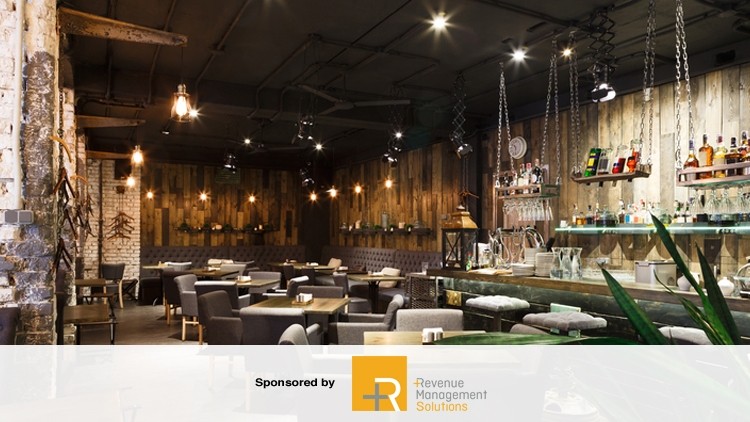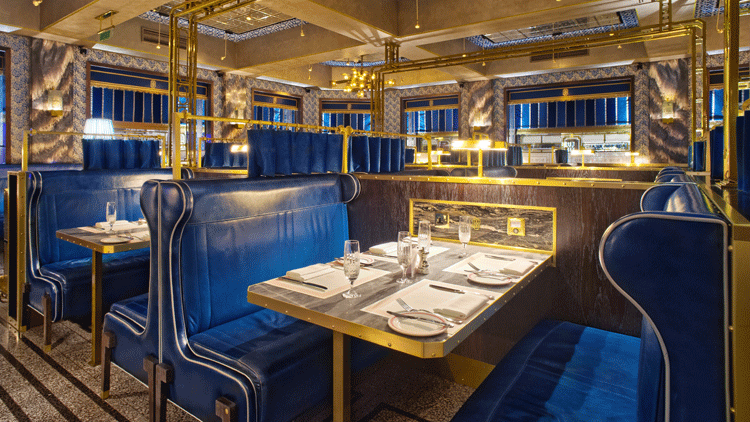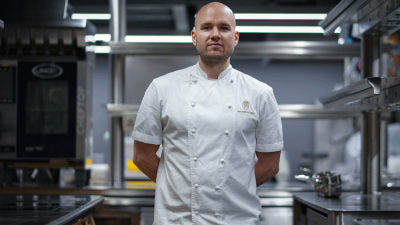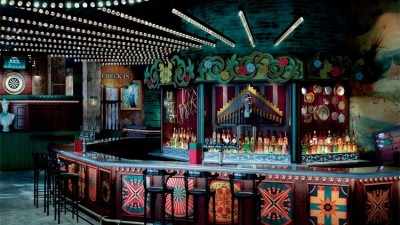Dynamic pricing: why restaurants are using airline tactics

Chicago’s Alinea is generally accepted to have been the first restaurant to experiment with it, using its Tock online booking system to offer 35% off regular menu prices at quieter times. A number of other restaurants that use the Tock ticketing system have since followed its lead.
The tactic certainly has similarities with the well-established practice of serving menus that are more attractively priced and often less profitable at quieter times, the set lunch menu being the most obvious example. But the crucial difference with dynamic pricing is that restaurants are charging different prices for menus and experiences that are identical.
The tasting menu at Leeds restaurant The Man Behind The Curtain costs between £60 and £95 per person depending on when a customer books. Its price drops early in the week when demand is lower and the price also drops at smaller increments on less popular time slots at the weekend: those willing to eat at 6pm on a Saturday will pay £10 to £15 less than those who are booked in for 8pm, for example.
The Black Swan at Oldstead – another oversubscribed Yorkshire restaurant that uses Tock – uses very similar tactics to spread demand across the week. “Consumers are perhaps most familiar with the use of yield management in travel,” says Dora Furman, vice-president at Revenue Management Solutions (RMS). “Airlines, hotels and car rental companies change prices constantly based on revenue channel, day of booking and date of future use. Customers have become extremely savvy (“I can save £200 if I leave at 5am!”).”
Furman says that dynamic pricing is part of a bigger business field called yield management, which monitors revenue streams to maximise their potential. “Some sectors of the hospitality industry are already long-established in the practice, and now restaurant operators are getting in on the act, looking to add a new layer of flexibility.”
Making operations easier
Soho restaurant Bob Bob Ricard hit the headlines earlier this year with its simplistic take on the dynamic pricing model. The luxurious Russian-owned eatery now offers a regular menu and an off-peak menu depending on what day and time a customer visits. All lunchtimes are classified as off-peak, as are dinner times on Sundays and Mondays.
Those that order from the off-peak menu can expect a discount of 15% to 20% on food – 20g of white sturgeon caviar will set you back £29 at peak times and £25 off peak, while lobster, crab and shrimp pelmeni (dumplings) will set you back £14.50 off peak versus £16.50 at peak times.
Founder Leonid Shutov says he introduced the menus to make operations easier. “It evens out demand between our more popular and less popular times, which makes running the business much simpler. I guess I was inspired by how other industries use it, but really it’s basic supply and demand economics.”
A few months in, the strategy is already having a positive effect on the business. There has been a substantial uplift in covers during off-peak times which has improved the restaurant’s overall profitability. “Perhaps the most positive thing about the project is that spend per head has remained pretty much the same,” says Shutov. “That means that our off-peak customers are using the saving to enhance their enjoyment of the restaurant with more dishes or perhaps more fancy wines. That’s good news for both parties.”
Shutov may adopt the same model at his upcoming restaurant Bob Bob Cité, but not straight away. “It’s a model that responds to the way a restaurant operates. To manage demand you need to assess, so we’ll need to see how customers use Bob Bob Cité before we experiment with dynamic pricing there.”
Part of the reason the restaurant industry has been slow to adopt dynamic pricing is that some of the strategies used by other sectors are a poor fit. “We can’t be punitive with it,” continues Shutov. “Dynamic pricing for some companies, such as Uber, means surge pricing (asking people to pay extra for goods and services that are in very high demand). Restaurants are reliant on goodwill, so we can’t do that to our customers. They would never forgive us.”
The airline industry’s model of charging wildly different prices for the same flight is potentially problematic too – diners at top-end restaurants aren’t likely to react well to finding out that a fellow diner with the same booking slot as them is paying 50% less for their meal.
Harrogate restaurant Norse experimented with dynamic pricing in 2016, but has now dropped it. “It was by no means a disaster but it did not really do much for us,” says founder Paul Rawlinson. “We had a big issue with guests booking, rocking up and not realising that they were getting their meal at a reduced price. We did not feel like it was really driving a huge amount of business. But it may well have been because we lack the marketing oomph to get it out there and explain it to people.”
High-profile Shoreditch restaurant The Clove Club has discussed dynamic pricing, but is yet to introduce it. “It’s a tricky one because we want to offer The Clove Club experience at a fair price,” says co-founder Johnny Smith. “With that in mind we’d never sell our meals above the normal price, but we would certainly consider selling meals at quieter times at a reduced price. But we’re busy throughout the week at the moment so there’s not much of an incentive to do it. I do think it’s a valid and healthy way for restaurants to drive business at slower times and a good alternative to discounting.”
But isn’t dynamic pricing a form of discounting? Shutov doesn’t think so. “Discounting is a stop-gap measure that can end up hurting restaurants. I don’t view dynamic pricing as discounting because it’s offered to everyone that is in the restaurant at that time. It’s not the same as giving 10% of your customers a 40% off coupon.”
RMS says that traditional tactics for filling quieter periods – including early bird menus, coupon discounting, and offers through the likes of Groupon – are by and large less sophisticated than a well thought out dynamic pricing strategy.
“They’re more static and less flexible. Dynamic pricing and other yield management strategies tent to be a better fit,” says Furman. Currently the preserve of top-end independents, it will be interesting to see whether dynamic pricing is picked up by larger, branded restaurants.
The Insider
Dora Furman
vice-president, Revenue Management Solutions (RMS)
As more and more restaurant operators begin to take advantage of a dynamic pricing strategy (ie, menu prices that adjust to customer demand by day of week and/or hour to drive overall profitability), what do operators need to know and where should they look for guidance to effectively and efficiently implement such a strategy?
Dynamic pricing offers restaurant operators a new opportunity to maximise profitability using the detail in their data. Real information can feed into real strategies, making success more likely, while taking the guesswork out of restaurant pricing. Understanding who the customers are and their purchasing behaviours, can assist operators in developing a price strategy that increases profitability through increased footfall and/or increased spend per head.
For example, could the ‘date night’ couple (a one starter, two mains and two drinks bill) be encouraged to eat or drink more? Are there changes to the menu (bundling or other discounts) that can be made on a Monday evening that can increase the date-night couple’s frequency of visits from once every three months to once every month?
There are other examples too. If an operator is experiencing a slow lunch on a Wednesday, they can quickly react and deploy a dynamic pricing initiative by sending a promotion to an existing or new customer by leveraging a third party partnership such as Deliveroo. If someone is hungry, and they’re scrolling through Deliveroo, a provocative offer may ultimately entice them to choose the restaurant versus visiting another operator.
Independent operators can also gain from a dynamic pricing strategy. Perhaps they do not have the reassurance of advance bookings that the fine-dining restaurants do, or the vast footfall and swift turnaround of a quick-service operator. However, they can react to customer behaviours using the knowledge in their data via channels that are suited to their business. Operators should be looking to use their data to predict times they anticipate a few empty tables, designing offers and changing prices each time they change their menu. Eventually, digital menus will become the norm across the restaurant sector, allowing operators to make instant changes to pricing according to the market conditions at the time.
The key message underpinning the success of a dynamic pricing strategy is that understanding data, and really getting to the heart of it, needs investment to see a return. Restaurant operators should create a plan based on the knowledge already at their fingertips. Why cannibalise organic sales with random or guess-based offers when the table would have been occupied anyway? It is important to be reactionary – but to the real data. Time and money needs to be invested. Managers must be trained to play to the strengths of the dynamic pricing model and react on the ground.
With these ideas in place, every restaurant should be ready for the rush as they push meaningful offers to the right places, at the right time.
www.revenuemanage.com
020 3755 0906














